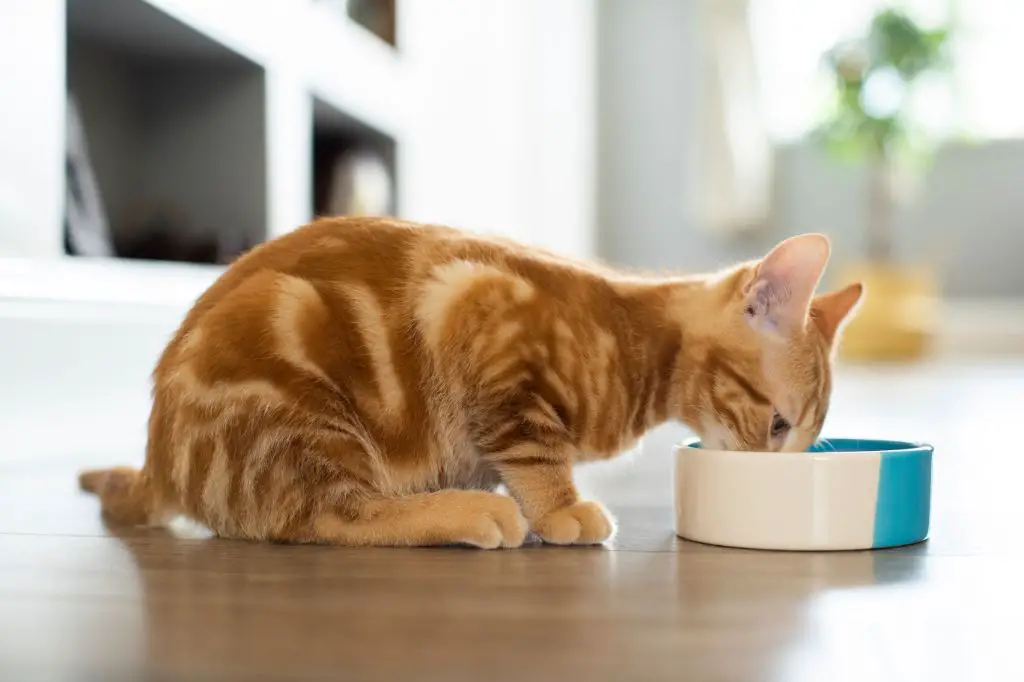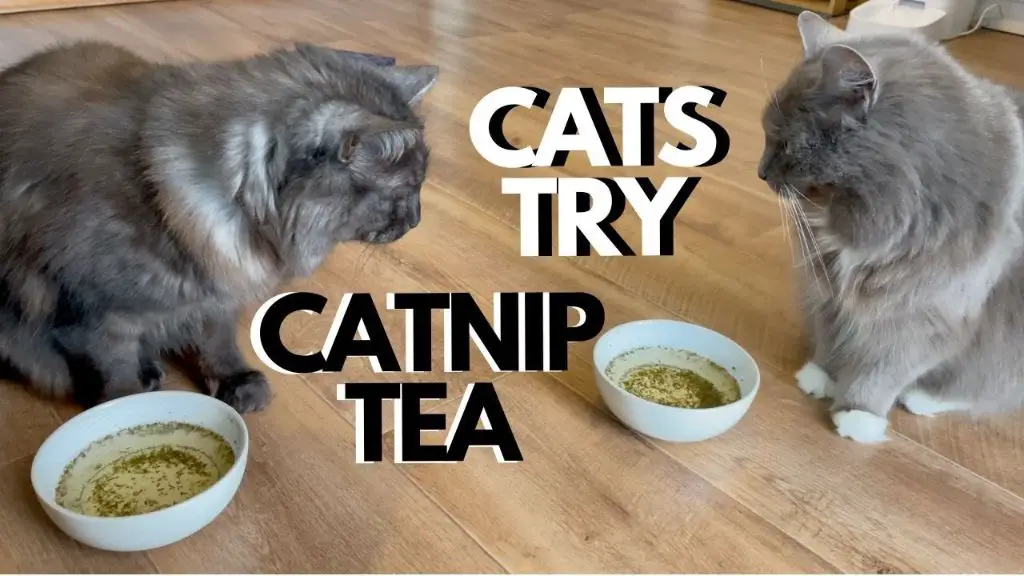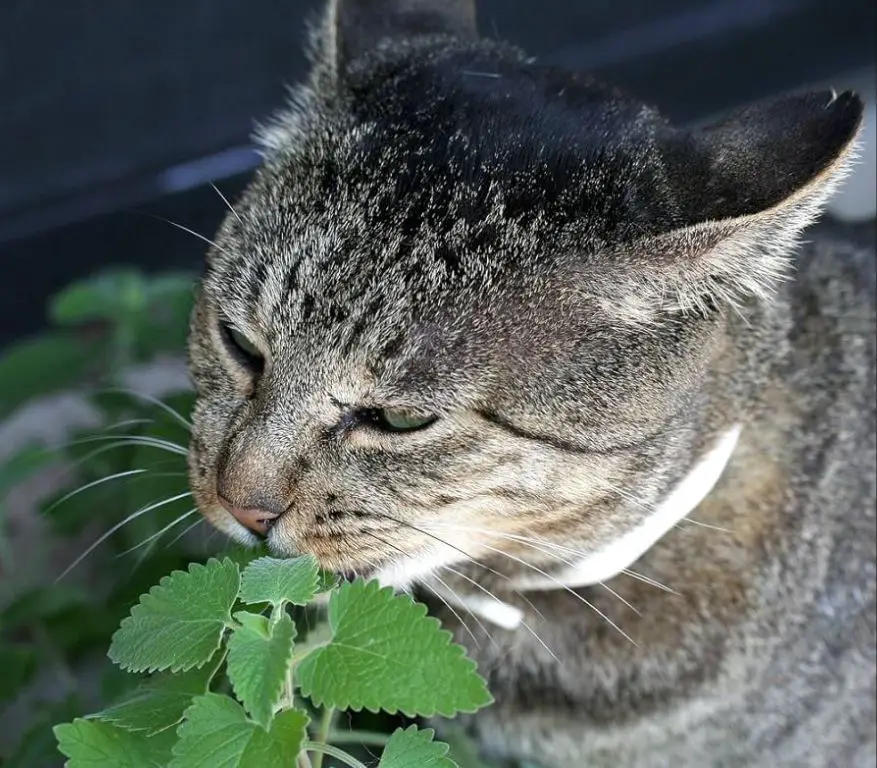What is catnip?
Catnip (botanical name Nepeta cataria) is a species of the mint family that has a unique effect on cats. It contains a chemical called nepetalactone which binds to receptors in a cat’s nose and has a euphoric effect. When cats smell or ingest catnip, most will react by rolling, flipping, and rubbing against the plant or ground. Some cats become hyperactive, while others seem to mellow out. The effects have been described as being similar to LSD or marijuana for humans.
Catnip is native to parts of Europe and Asia but now grows wild across much of North America. It is a perennial flowering plant that reaches up to 3 feet tall and has small lavender flowers and heart-shaped, gray-green leaves with scalloped edges. The nepetalactone is concentrated in tiny bulbs on the stem and leaf veins.
While catnip doesn’t have any noticeable effect on most other animals, even large cats like lions and tigers seem susceptible. Not all domestic cats react strongly to catnip either; researchers estimate about 50-70% have a sensitivity to it.

Is catnip safe for cats?
Catnip is generally considered non-toxic and safe for cats when used moderately (1). The active ingredient in catnip is called nepetalactone, which is known to have a pleasurable effect on cats but does not cause long-term side effects or addiction (2). However, some potential side effects of catnip to be aware of include:
– Short-term hyperactivity or excitability
– Aggressive behavior in some cats
– Upset stomach if a large amount is ingested
While catnip is not addictive, it’s recommended to use it in moderation to avoid overstimulating your cat. Offering catnip occasionally as a special treat is a good rule of thumb. Most veterinarians consider catnip non-habit forming and safe as part of an enriched environment (1). However, do monitor your individual cat’s reaction and adjust frequency accordingly.
Overall, catnip is generally safe for cats to sniff, eat, or drink in moderation. But be sure to buy catnip made specifically for feline consumption and limit overuse.
Sources:
(1) https://www.petmd.com/cat/general-health/what-is-catnip
(2) https://www.hillspet.com/cat-care/nutrition-feeding/catnip-for-cats
Benefits of catnip for cats
Catnip contains nepetalactone, which is the compound that causes the response in cats when they smell or ingest catnip. Nepetalactone binds to the olfactory receptors in a cat’s nose and stimulates a response that can have calming and soothing effects on cats.

Some of the key benefits of catnip for cats include:
- Natural stress reliever – Catnip acts as a sedative and can reduce anxiety, stress and depression in cats. The nepetalactone promotes relaxing and soothing effects.
- Encourages play and exercise – Catnip stimulates cats and can encourage more active play. The increase in activity provides exercise and helps prevent obesity.
- Can aid relaxation and sleep – While catnip excites cats initially, it can also have a calming effect afterward and help relax cats before bedtime. This can promote better sleep.
Overall, when used properly, catnip provides a safe way to help reduce stress and anxiety in cats while also promoting exercise through increased playtime 1.
Can catnip be added to water?
Yes, catnip can be brewed into a tea for cats to drink. Catnip contains nepetalactone, which is the chemical compound that causes the signature response in cats when they smell or ingest catnip. By steeping dried catnip leaves in hot water, you can make a tea that will allow your cat to safely consume the catnip.
To make catnip tea, use about 1-2 teaspoons of dried catnip per cup of hot water, recommends WikiHow https://www.wikihow.com/Make-Catnip-Tea-for-Cats. Let the catnip steep for 3-5 minutes before straining out the leaves. This will allow the active compounds to infuse into the water. The finished tea can then be served at room temperature or chilled.
Some key tips when making catnip tea include using high quality, dried catnip, not oversteeping, and avoiding letting your cat drink the leftover leaves, which may cause vomiting. Overall, catnip tea is a safe and enjoyable treat for most cats when made properly.
Benefits of catnip tea
One of the benefits of catnip tea is that it can be an easy way to get the benefits of catnip into your cat’s system. Some cats enjoy playing with or eating dried catnip, while others don’t care for it. For those cats that aren’t interested in catnip toys or loose dried leaves, catnip tea can be a helpful alternative.
Cats generally don’t drink as much water as they should, and catnip tea provides hydration along with the catnip. The aroma and flavor of the tea may encourage some cats to drink more often. Staying hydrated supports urinary tract health.
Catnip has a natural calming effect on cats. Serving a cup of mild catnip tea before bedtime can help relax your cat and set the stage for a restful night’s sleep. The soothing, warm tea can provide a nice bedtime routine.
According to research by WebMD, catnip has traditionally been used to relieve nervousness and nervous disorders. The herb acts as a mild sedative and has a calming influence. Catnip tea can be a gentler way to administer those benefits.
Potential downsides of catnip tea
While catnip tea is generally considered safe for cats when given in moderation, there are some potential downsides to be aware of:
The effect of catnip tea may be weaker compared to giving your cat dried or fresh catnip. This is because steeping catnip in hot water can cause some of the volatile oils that produce the catnip reaction to evaporate or oxidize. As a result, your cat may not respond as strongly to catnip tea versus raw catnip [1].
Some cats may dislike the taste of catnip tea. The flavor of the tea can vary depending on how long the catnip is steeped, and some cats may not like the herbal taste. It’s a good idea to try just a small amount first to see if your cat enjoys it before making a large batch.

Catnip tea can potentially stain your cat’s water bowl if the used tea is not cleaned out promptly after drinking. The green chlorophyll in catnip can leave behind a stubborn stain. Be sure to promptly wash and rinse your cat’s water bowl after serving catnip tea.
How to Make Catnip Tea
Making catnip tea is simple and only requires a few ingredients. According to WikiHow (https://www.wikihow.com/Make-Catnip-Tea-for-Cats), the basic recipe is:
- 1-2 teaspoons of dried catnip per cup of hot water
- Let the catnip steep in the hot water for 5-10 minutes
- Strain the tea to remove the catnip
- Allow the tea to cool before serving to your cat
To make the tea, start by bringing water to a boil. Once boiling, remove from heat and add 1-2 teaspoons of dried catnip per cup of water. Let this steep for 5-10 minutes to allow the flavours and oils from the catnip to infuse into the water. Then strain the tea through a fine mesh strainer or cheesecloth to remove the catnip. Allow the strained tea to cool to room temperature before serving to your cat.
It’s important not to steep the catnip for too long, as according to EightOunceCoffee (https://eightouncecoffee.com/blogs/news/how-to-catnip-tea), oversteeping can make the tea bitter. A steeping time of 3-5 minutes is often recommended.
How to serve catnip tea
When serving catnip tea to your cat, it’s important to use a separate water bowl just for the tea. Don’t mix the catnip tea in with your cat’s regular drinking water. Cats are sensitive to tastes and scents, so adding catnip tea to their regular water may cause them to avoid drinking it.
Offer the catnip tea to your cat at room temperature or chilled, not hot. Cats prefer cooler water temperatures. Providing the tea cold can also help enhance the aroma of the catnip.

Be sure to change the water bowl frequently when serving catnip tea. The effects of the catnip will diminish over time as the tea sits out, so refresh it often to keep its potency. A fresh bowl of catnip tea will be more enticing to your cat.
By using a separate bowl just for catnip tea, providing it cool, and changing it regularly, you can safely allow your cat to enjoy the appealing scent, flavor, and effects of catnip tea.
Monitoring Your Cat on Catnip
When first introducing catnip to your cat, it’s important to monitor their initial reactions closely. Catnip can cause excitability, hyperactivity, and even aggressive behavior in some cats. Limit giving catnip to an occasional treat, not something given daily.
Keep a close eye on your cat for the first 10-15 minutes after exposing them to catnip. Note any concerning symptoms like anxiety, restlessness, or aggression. If your cat seems distressed, remove the catnip immediately. Some cats may get overstimulated from catnip.
In general, limit catnip to no more than 1-2 times per week for most cats. Using catnip as a daily treat can lead to habituation, where your cat becomes less responsive to its effects over time. Following these precautions helps ensure catnip remains an enjoyable experience for your pet.
If giving catnip tea, monitor how much your cat drinks at first. Consuming too much at once may cause an upset stomach. Start with small amounts, refilling the water bowl over time. Never leave a large bowl of catnip tea out unsupervised.
While non-toxic, some cats may experience diarrhea or vomiting if they ingest extremely large amounts of catnip. Discontinue use if any negative side effects occur. Overall, catnip is safe for cats in moderation with proper monitoring. Follow these tips to keep your cat happy, healthy, and stimulated by this popular herb.
Other ways to offer catnip
In addition to catnip tea, there are other ways to offer your cat the stimulating benefits of catnip such as:
Catnip toys or loose dried catnip
Catnip stuffed toys or loose dried catnip sprinkled around are great ways to let your cat enjoy this herb. The scent of the catnip will encourage cats to play with the toys and roll around in the loose catnip. According to Pet Naturals Calming for Cats, you can “Sprinkle the dried leaves in areas you want your cat to be interested in, like a new cat bed, or spray liquid catnip on a favorite toy.”
Catnip sprays
Catnip sprays allow you to easily mist catnip extract onto surfaces or toys. The spray activates the catnip and releases the stimulating scent. According to Kong, catnip spray “encourages play and exercise for your cat.”
Catnip added to treats or food
While it’s not recommended to add catnip to your cat’s regular food, you can find some cat treats and foods containing catnip. The stimulating properties can make mealtime more exciting. However, PetMD warns that you should “monitor your cat after feeding catnip treats or food, and adjust the amount given if your cat has an abnormal reaction.”

